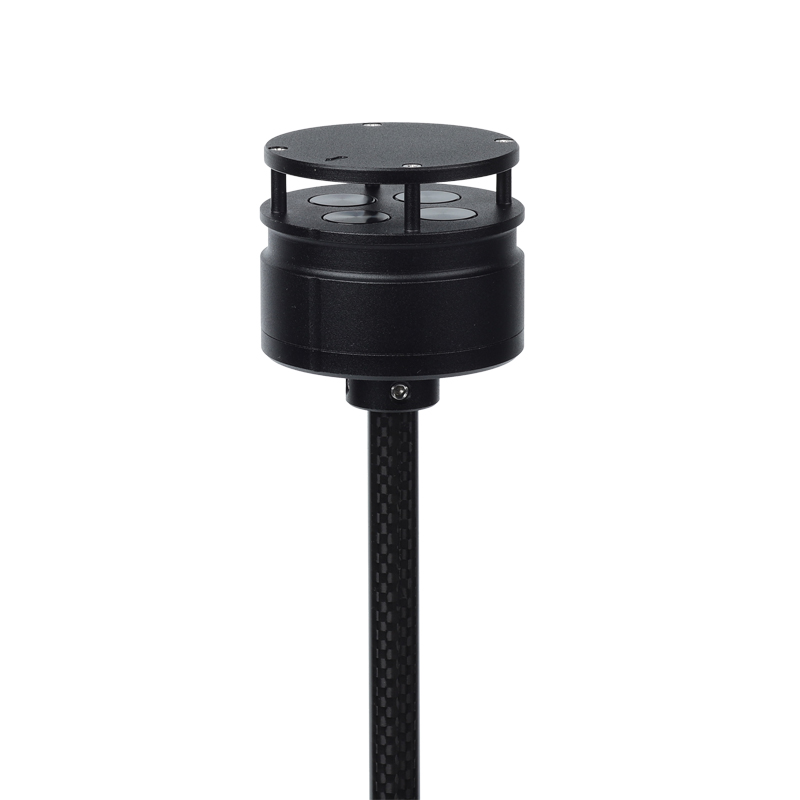Shandong Fengtu IOT Technology Co., Ltd
Sales Manager:Ms. Emily Wang
Cel,Whatsapp,Wechat:+86 15898932201
Email:info@fengtutec.com
Add:No. 155 Optoelectronic Industry Accelerator, Gaoxin District, Weifang, Shandong, China

Sales Manager:Ms. Emily Wang
Cel,Whatsapp,Wechat:+86 15898932201
Email:info@fengtutec.com
Add:No. 155 Optoelectronic Industry Accelerator, Gaoxin District, Weifang, Shandong, China

Model:FT-F1
Brand:fengtu
Product Name: Anemometer for drones
Anemometer for drones Product Introduction: FT-F1 anemometer is an anemometer that uses the ultrasonic resonance principle.
Specially designed and installed on small aircraft and unmanned platforms to monitor wind speed and direction values in low-altitude areas.
The FT-F1 weighs 56g and has a diameter of 46mm, making it small and light. It is compact and solid, has strong anti-electromagnetic interference, waterproof and dustproof functions, and can work normally at an altitude of 4,000 meters and in an external environment with a temperature between -40°C and +70°C.
It uses a low-power chip inside and can measure wind speeds up to 60m/s. It is especially suitable for unmanned aircraft and their related flight control platforms, as well as environmental monitoring systems using aircraft.
FT-F1 is designed with two installation methods: it can be installed vertically on the top of the aircraft or inverted on the bottom of the aircraft.
Anemometer for drones technical indicators:
Wind speed measurement range 0-60m/s, accuracy 3%, resolution 0.1m/s
Wind direction measurement range 0-359°, accuracy ±3°, resolution 1°
Instrument diameter 46mm
Instrument height 48mm
Instrument weight: 56g
Material:ABS
Color Black
Digital output RS485
Baud rate 4800-19200
Communication protocol ModBus, ASCII
Operating temperature/humidity -40℃-+70℃; 0-100%
Working altitude 0-4000 meters
Power requirement VDC: 5-30V; 15mA (12V)
Installation method: Mount on the top column of the aircraft or hang on the bottom
When driving in a tunnel, visibility monitoring is extremely crucial. The interior of a tunnel is relatively enclosed with limited air exchange and is prone to being affected by various factors that can reduce visibility. Such situations as bad weather, the accumulation of vehicle exhaust fumes, and...
Atmospheric environment monitoring sensors, as an important tool for monitoring physical and chemical parameters in the atmospheric environment, function by collecting real-time data on temperature, humidity, barometric pressure, wind speed, wind direction, and air quality. These sensors have a wide...
Against the backdrop of intensifying global climate change, frequent extreme weather events, and the growing reliance on refined meteorological data across various industries, high-precision and highly reliable environmental monitoring has become a critical need in numerous fields such as meteorolog...
In the field of road traffic, adverse weather conditions are like invisible "traffic killers", posing a huge threat to safe operations. Road surface water accumulation, thick snow, excessive rain and snowfall, or the frequent occurrence of extreme weather such as dense fog, thick fog, sand...